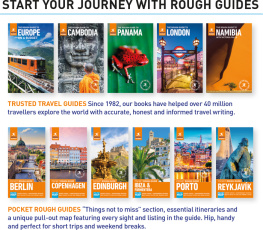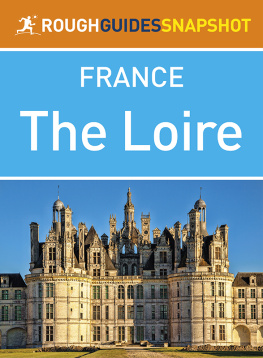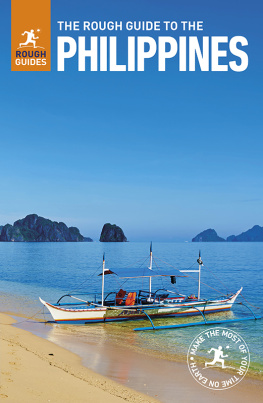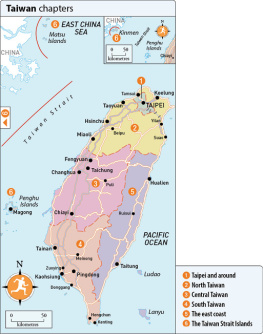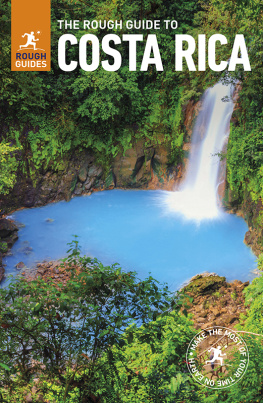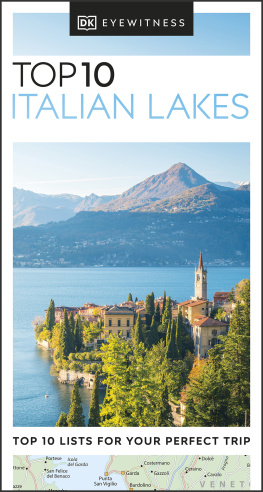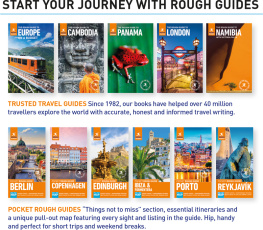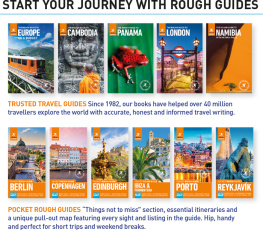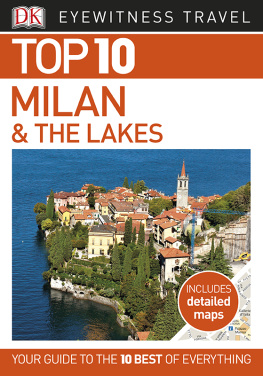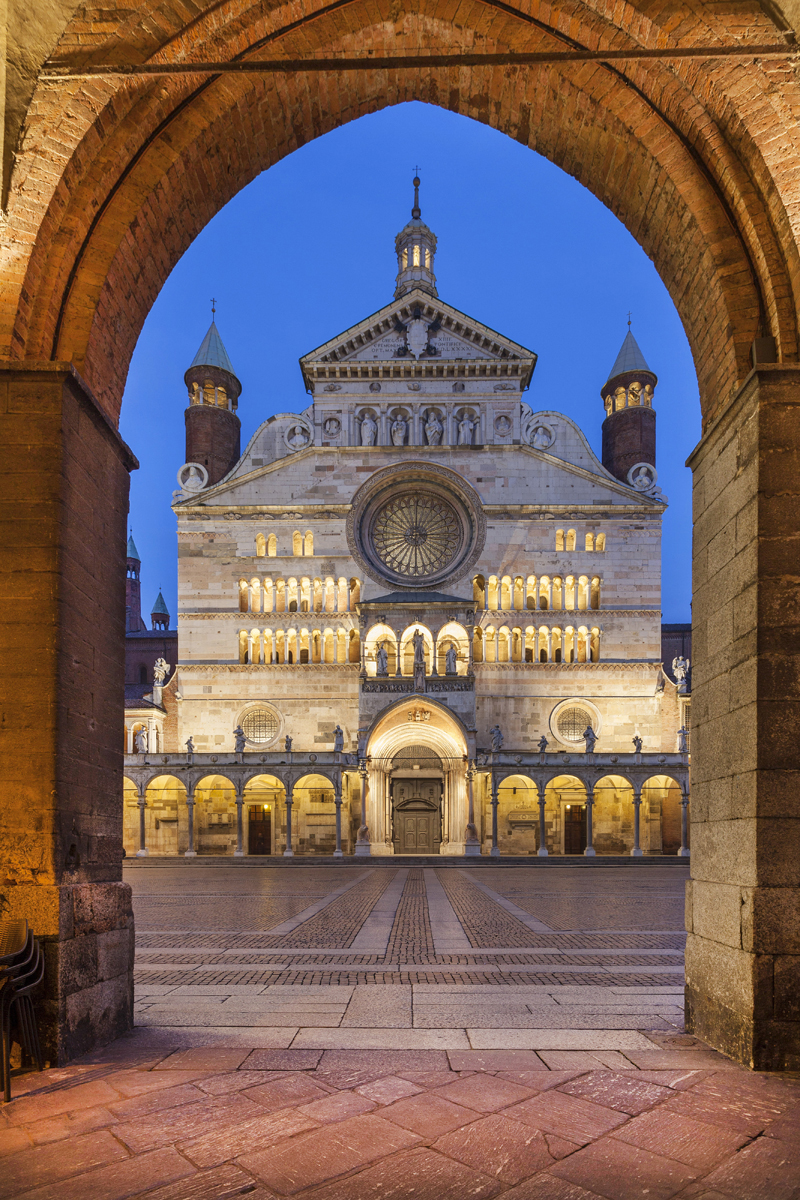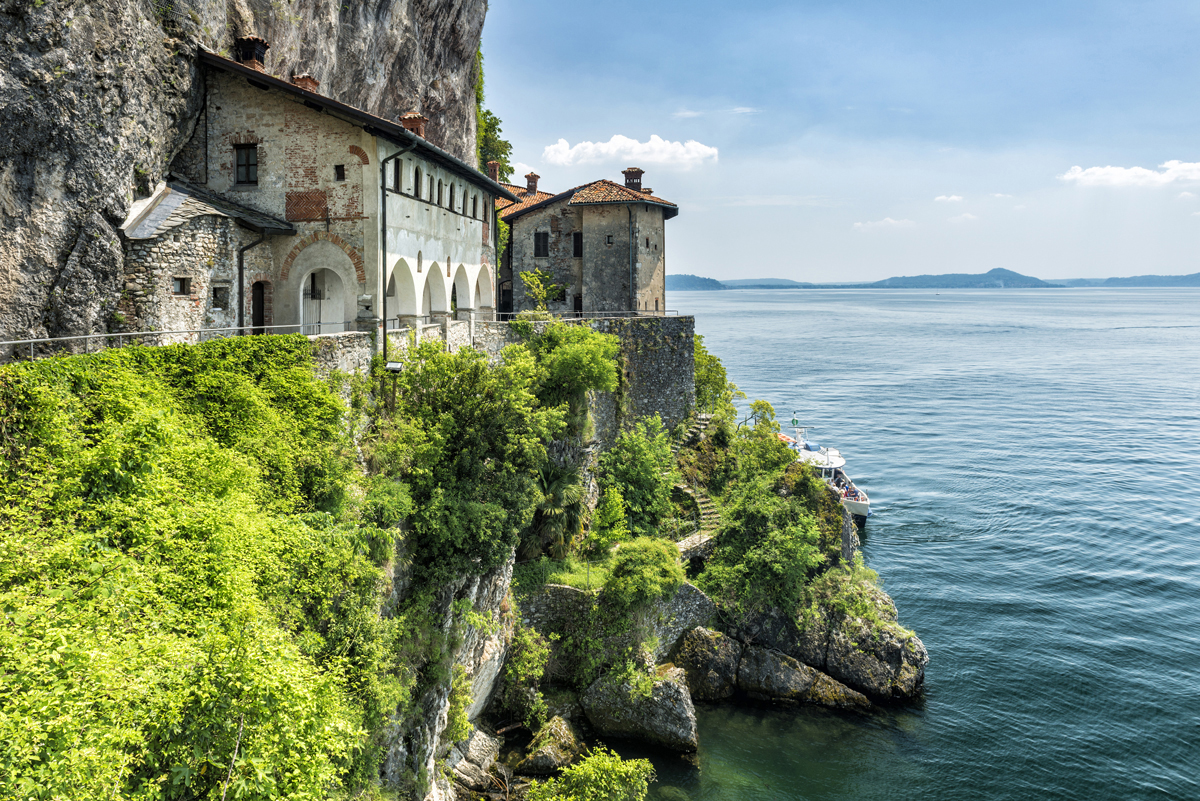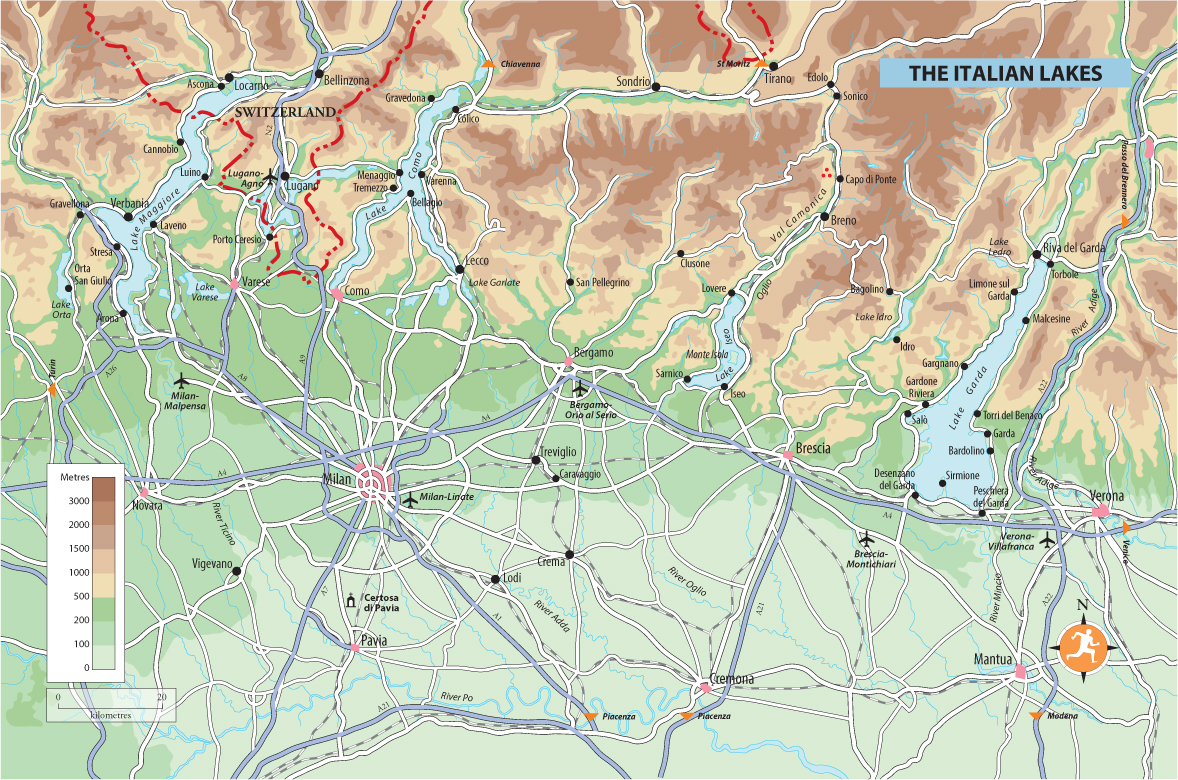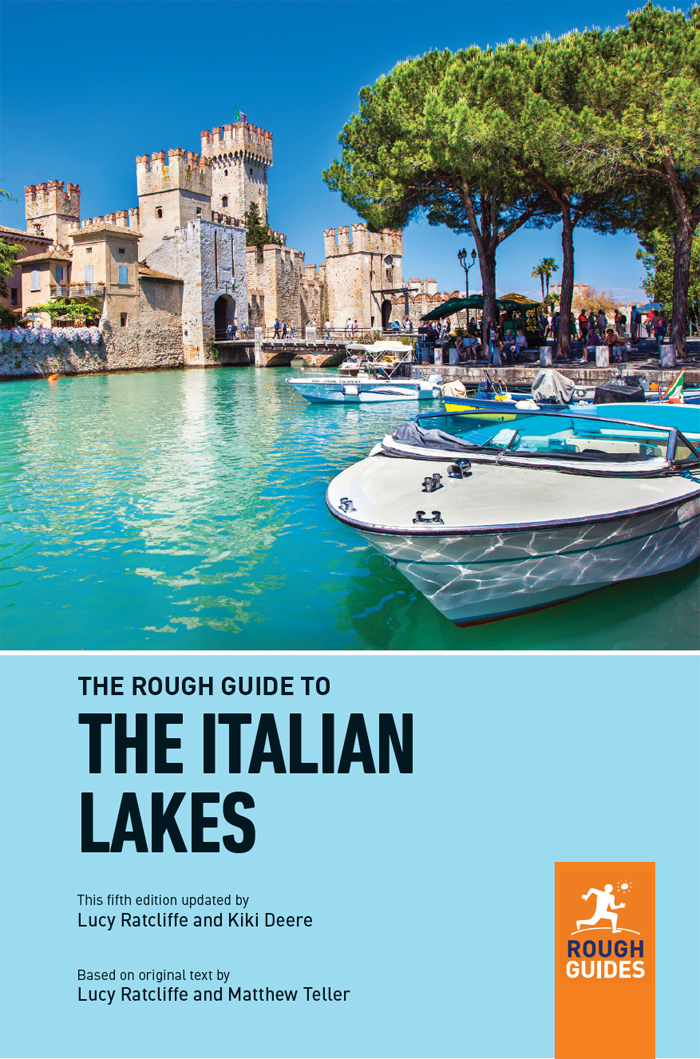
ClickAlps
DUOMO, CREMONA
Contents
iStock
Introduction to
The Italian Lakes
The Italian Lakes are a little slice of paradise. Generations of travellers from the north, descending wearily from the chilly Alpine passes, have come into this Mediterranean vision of figs and palms, bougainvillea and lemon blossom, and been lost for words. Elegant ribbons of blue water stretch out ahead, folded into the sun-baked foothills; after the rigours of the high Alps, the abundance of fine food and wine must have been a revelation. Warming, awe-inspiring and graced with natural beauty, the lakes are still a place to draw breath and wonder.
These days, of course, mass tourism has found the lakes, and the shoreside roads that link every town can be as packed as the ferries that chug to and fro. But the chief reason to visit the area its spectacular landscapes remains compelling, and there are plenty of ways to avoid the crowds.
The lakes deep, slender fjords gouged by glaciers are sublime. All are oriented northsouth, ringed by characterful old villages often wedged onto narrow beaches between rugged cliffs and the water. And those classic lakes images of flower-bedecked balconies, Baroque gardens and splendid waterside villas can be found here in abundance.
Dotted around and between the lakes are some of Italys finest art cities. Milan is pre-eminent, while Verona, Bergamo, Mantua and others display in their architecture as well as their art a civilized, urban vision that stands in marked contrast to the wild, largely rural character of the lakeside hinterlands. Italy only became a unified state in 1861 and, as a result, people often feel more loyalty to their home town than to the nation as a whole a feeling manifest in the multitude of cuisines, dialects and outlooks that span the region.
Where to go
Stylish, sophisticated Milan needs little introduction the undisputed capital of the north, and richest city of Italys richest region, Lombardy. Its pilgrimage status is fourfold. Art pay homage to Leonardo da Vincis iconic Last Supper . Architecture explore the spectacular Duomo inside and out. Music sample opera at the world-famous La Scala . Shopping this is one of the worlds fashion capitals. The opulent Certosa di Pavia monastery, set amid the rice fields south of Milan, stands as a monument to the citys Renaissance rulers.
The lakes in Latin
On maps and in tourist brochures, youll notice that the lakes are often referred to by their old Latin names . These titles which are also much used by writers and poets evoke a sense of pride in local culture and history, forming a linguistic link between the present and the distant past. For this reason, politicians also love them: when the Province of Novara was reorganized in the 1990s, the new province that resulted, covering territory around lakes Maggiore and Orta, was named Verbano-Cusio-Ossola, deliberately playing on the Latin appellations.
For all practical purposes, though, these names are a curiosity: they are rarely used without their modern equivalents and never on road signs.
| Lake Orta | Cusio |
| Lake Maggiore | Verbano |
| Lake Como | Lario |
| Lake Iseo | Sebino |
| Lake Garda | Benaco |
The lakes are ranged in formation north of Milan, interleaved between the Prealpine foothills. The westernmost is Lake Orta , a pretty little wedge of blue water that holds one of the loveliest of
all the regions medieval villages, Orta San Giulio . The longest of the lakes Lake Maggiore lies draped between high ridges of green mountainside.
The resorts of Stresa and Pallanza face idyllic Isola Bella , crowned with palaces and Baroque gardens. North lies atmospheric Cannobio , while, across the border, the Swiss neighbours of Locarno and Ascona offer a ritzy allure. Varese is the regions
most underrated city. Penetrate its industrial suburbs and you find a core of cobbled piazzas and stylish boutiques, made unmissable by the superb gallery of contemporary art at Villa Panza .
Forked Lake Como is one of the best-known holiday destinations in Italy, offering, in waterfront villages such as Bellagio and Varenna , the classic images of the lakes. Como itself is a dignified old silk town with a magnificent cathedral, while behind Menaggio and Tremezzo coil scenic mountain footpaths.
The hill-town of Bergamo rises from the plain northeast of Milan. Its Gothic-medieval upper town, characterized by cobbled alleys winding between high-fronted palazzi , is a foodies delight, packed with fine restaurants, while the Accademia Carrara is Lombardys most prestigious gallery outside Milan.
A little east, the squiggle of Lake Iseo attracts far fewer visitors and hosts country walks and, on its hilly fringes, prehistoric rock carvings and the prestigious Franciacorta vineyards. Nearby stands Brescia , a hard-working city that boasts an appealing cobbled centre and fine Roman ruins, while a short way south, the medieval town of Cremona is a draw for its history of world-class violin-making.
Marking the eastern limit of Lombardy is Italys largest and most famous lake: Lake Garda . The southern shores are flat or gently rolling; highlights here include busy Sirmione , on its long peninsula. To the east, a string of old Venetian ports includes gentle Garda and lesser-visited Torri del Benaco . Gardas western shore has more classic lake imagery exotic flower gardens, palm-shaded promenades and fine Art Nouveau villas crowding the waterfront around Sal and Gardone Riviera .

iStock
LIMONE SUL GARDA
In the north, Lake Gardas shores are hemmed in by sheer, parallel mountains: the dramatic scenery here takes your breath away. Gargnano village beloved of D.H. Lawrence is a highlight on the trip north past Limone to the splendid, once-Austrian resort of Riva del Garda at the head of the lake. As well as a sense of history, Riva, and its neighbour, Torbole , have watersports aplenty, and there are good walks on the crest of Monte Baldo on the eastern shore above Malcesine .
Then theres Verona , a laidback, romantically minded city a stones throw from Lake Garda with, at its core, the glorious Roman Arena , scene of a famous summer opera festival. Roaming Veronas alleys, dipping into the local taverns and restaurants, is a rare pleasure.
Just to the south, the romantic town of Mantua (Mantova in Italian) makes a compelling side-trip, with spectacular Renaissance frescoes and lotus-fringed lakes.
When to go
The best months to visit are June and, especially, September . At these times, visitor numbers are below their peak, but the weather is lovely: sunshine pouring from blue skies, temperatures that are toasty but not scorching, and magically clear, cool evenings.
The hottest months, July and August , are when the lakes are at their most crowded: weekends in particular can see roads jam-packed with traffic. The cities, especially Milan, can be sweltering, with temperatures topping 35C for days on end. Spectacular but short-lived thunderstorms are common in late August.

